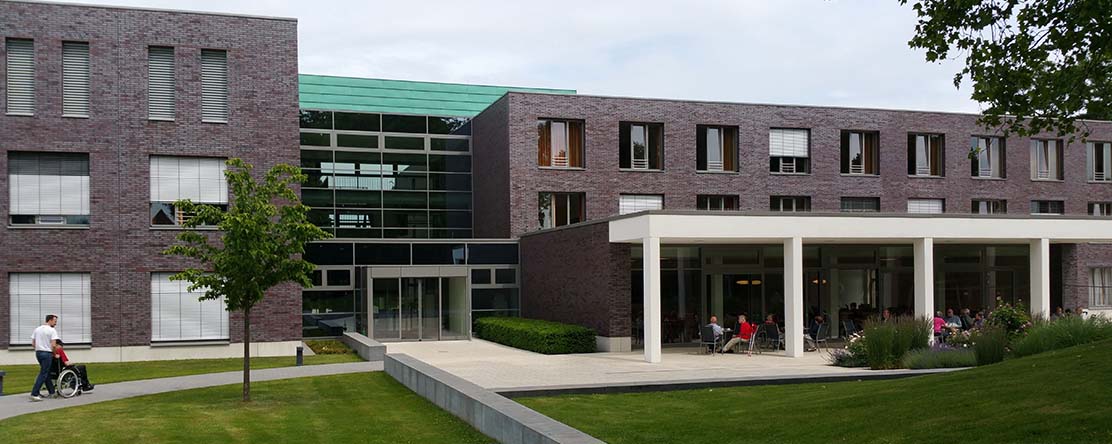
In the News
Health Systems Take on Role as Anchor Institutions, Enhance Community Development
-
Focus Areas
Chronic Disease Prevention, Health Care & Population Health, Healthy Communities -
Programs
Build Healthy Places Network

During a webcast hosted by the Network for Excellence in Health Innovation, panelists highlighted how their health systems have acted as anchor institutions and embraced community development—through strategic partnerships—in order to address challenges facing their populations.
 As healthcare professionals continue to recognize the impact of social determinants on a person’s health, health systems have welcomed their role as anchor institutions, working to improve the physical, social, and economic environments in their regions.
As healthcare professionals continue to recognize the impact of social determinants on a person’s health, health systems have welcomed their role as anchor institutions, working to improve the physical, social, and economic environments in their regions.
Anchor institutions are enterprises, such as universities and hospitals, that are rooted in their local communities by mission, invested capital, or relationships to customers, employees, and vendors.
During a webcast, hosted by the Network for Excellence in Health Innovation, panelists highlighted how their health systems have acted as anchor institutions and embraced community development—through strategic partnerships—in order to address challenges facing their populations.
The panelists began by underscoring the importance of these social determinants and the impact they have on people as a whole. “We spend about $3.5 trillion per year on medical care, and what’s worth remembering is that 85% of that is spent on chronic disease,” explained Douglas Jutte, MD, MPH, executive director, Build Healthy Places Network. “Most chronic disease is avoidable, and most avoidable chronic disease is occurring among low-income people in low-income places.”
Providing an example, Jutte presented a Los Angeles county heat map and demonstrated that there was a direct correlation between the cities with the most economic hardship and the cities with the highest rates of childhood obesity.
“We know health is more than healthcare,” added John Vu, vice president of strategy, Community Health, Kaiser Permanente. He noted that just 10% of premature deaths are attributable to healthcare and broke down the impact of different social determinants:
- Social and economic factors (40%): education, employment, income, community safety
- Social behaviors (30%): tobacco use, diet, and exercise
- Clinical care (20%): access to care and the quality of care
- Physical environment (10%): air and water quality, housing, and transit
“So how does a healthcare organization embrace all of these other factors of health?” he asked. “We can’t just be providing the next heart surgery, the next mammogram, the next pill, and the next devices. We have to do all those things and also think about how we address all these other things.”
For Kaiser Permanente, this meant looking at all of their assets and how they could use those assets to improve conditions for health, requiring them to rethink the way they do business in order to address these factors. This meant providing good jobs, purchasing locally and diversely, building for impact, and engaging in policy.
He gave the examples of partnering with Los Angeles economic and workforce development organizations to get local neighborhood residents hired into open job positions, partnering with the Billion Dollar Roundtable—a coalition of organizations who spend at least $2 billion annually with minority- and woman-owned suppliers—and partnering with the Initiative for a Competitive Inner City to provide technical expertise for small and local businesses to grow their capacity.
Megan Sandel, MD, MPH, associate director, GROW clinic, Boston Medical Center; principal investigator, Children’s HealthWatch; associate professor of pediatrics and public health, Boston University Schools of Medicine and Public Health, walked through how Boston Medical Center looked within the city to identify areas would have the most impact.
Identifying 2 cities with the highest inequities and healthcare utilization, they pinpointed housing as the most pressing need in the communities. From there, the medical center developed various partnerships, through which they funded housing development initiatives.
Continue reading the full article in the American Journal of Managed Care.
Originally published by American Journal of Managed Care
More Updates
Work With Us
You change the world. We do the rest. Explore fiscal sponsorship at PHI.
Support Us
Together, we can accelerate our response to public health’s most critical issues.
Find Employment
Begin your career at the Public Health Institute.



